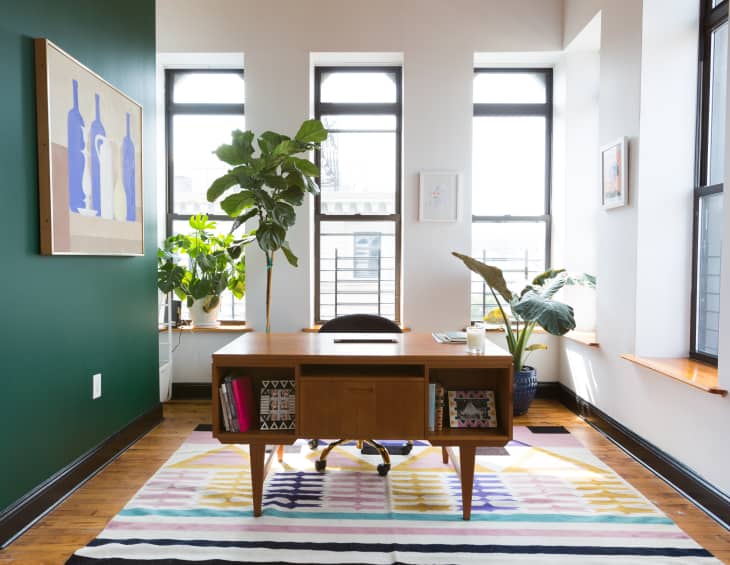If you thought monstera was massive, wait until you see elephant ear.
Elephant ear plants clearly get their nickname from the wonderfully gigantic size of their heart-shaped (or elephant ear-shaped!) leaves. There are many varieties and cultivars that span the spectrum of green, purple, white variegated leaves.
Elephant ears belong to two related groups of plants, Colocasia and Alocasia. Both types can be grown in the garden or as houseplants, though colocasias are more often planted outdoors (they’re generally larger) and alocasias are a bit more common as houseplants.
You can’t expect your elephant ear plant to grow as large indoors as it would outside, but that’s probably a good thing considering a single leaf can grow to be two feet wide and stems can reach five or more feet, depending on the variety.
Whether you’re planting elephant ear in a pot or a garden bed, they’re a lot of fun to grow.
Planting
Elephant ears grow from tubers. If you plant them outdoors in most parts of the United States, you’ll need to dig them up each fall because they won’t survive the cold.
For indoor growing, plant the tuber in a large pot (14- to 20-inches), and get an extra large one if you want your plant to become truly monstrous. Fill the pot about three-quarters of the way with potting soil and then nestle the tuber in the center with the root side down. Finish filling the pot the soil; the tuber should be about eight inches deep.

Light
Elephant ears need bright sunlight when grown indoors, but nothing too harsh. If you notice the leaves are looking bleached or singed, move it to a dimmer spot or add a sheer curtain. Outdoors they do well in partial shade.
Water
Elephant ears like to stay consistently moist, but not soggy. Be especially careful with watering if you use a pot without drainage holes. Always test the soil with your finger first. Humidity is also important to elephant ears, so it’s a good idea to set the pot in a saucer of water elevated by pebbles. (The pebbles will prevent the roots from sitting directly in the water, which will cause rotting.)
Fertilizer
Fertilize elephant ears every two weeks with an all-purpose liquid fertilizer. Stop fertilizing in winter to allow your plant to rest.
Dormancy
It’s not unusual for elephant ears to die back during the winter months. If the leaves start turning brown and falling off, it’s probably not dead—it’s just getting ready for its winter slumber. Cut off all the foliage and stop watering until you see new shoots appear in spring. If your plant does not go dormant, you should still reduce (but not completely stop) watering during the winter months.
Toxicity
Elephant ear leaves and stems contain oxalic acid, a toxin in the form of sharp crystals that is toxic to pets and humans. It can cause severe swelling in the throat, mouth, and lips and vomiting, and may also irritate your skin on contact. However, colocasias are frequently eaten in many countries in Asia—cooking breaks down the crystals, making them harmless.
Hải Yến
Gió bạn với cây tự buổi nào ,
Gió về cây lại ngất ngư chao .
Gió đi cây sẽ im lìm đứng,
Như kẻ lỡ làng dạ khát khao .



